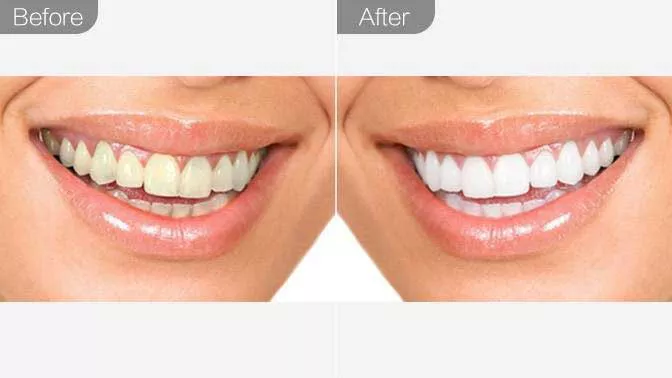Teeth whitening is one of the most sought-after cosmetic dental procedures. Many people desire a brighter smile, which can enhance their confidence and improve their overall appearance. However, with various options available on the market, it can be challenging to determine the best method for achieving whiter teeth. This article explores what dentists recommend for teeth whitening, providing insights into effective treatments, safety considerations, and tips for maintaining a bright smile.
Understanding Teeth Discoloration
Before diving into whitening methods, it’s essential to understand why teeth become discolored. Teeth can lose their brightness for several reasons, including:
Stains from food and beverages: Consuming coffee, tea, red wine, and certain berries can stain teeth over time.
Tobacco use: Smoking or chewing tobacco can lead to significant discoloration.
Age: As we age, the enamel on our teeth can wear down, revealing the darker dentin underneath.
Medication: Some medications, such as tetracycline, can cause discoloration.
Fluorosis: Overexposure to fluoride during childhood can lead to white spots or dark stains.
Understanding these factors can help in choosing the right whitening treatment.
Dentist-Recommended Whitening Methods
1. Professional In-Office Whitening
One of the most effective ways to whiten teeth is through professional in-office whitening treatments. Dentists use stronger whitening agents than those found in over-the-counter products.
How It Works
During an in-office whitening procedure, the dentist applies a high-concentration bleaching gel to the teeth. Often, they will use a special light or laser to enhance the whitening effect. This method typically takes about one to two hours, and patients can see significant results after just one session.
Advantages
Immediate Results: Patients often leave the office with visibly whiter teeth.
Supervised Treatment: The procedure is conducted by a dental professional, ensuring safety and effectiveness.
Customized Approach: Dentists can tailor the treatment to the individual needs of each patient.
2. Custom Take-Home Whitening Kits
For those who prefer to whiten their teeth at home, dentists often recommend custom take-home whitening kits. These kits contain lower concentrations of bleaching agents but are still effective.
How It Works
The dentist takes impressions of the patient’s teeth to create custom-fit trays. Patients fill these trays with a whitening gel and wear them for a specified period, usually a few hours a day or overnight, for several days to weeks.
Advantages
Convenience: Patients can whiten their teeth at their own pace in the comfort of their home.
Custom Fit: The trays are designed to fit snugly, reducing the risk of gum irritation and ensuring even whitening.
Gradual Results: Some patients prefer the gradual change, allowing for a more natural transition.
3. Over-the-Counter Whitening Products
While dentists typically recommend professional treatments for the best results, there are also effective over-the-counter options. These include whitening strips, gels, and toothpaste.
How It Works
Over-the-counter products generally contain lower concentrations of bleaching agents. Whitening strips are thin, flexible pieces coated with a whitening gel. They are applied directly to the teeth and usually worn for 30 minutes to an hour daily.
Advantages
Accessibility: These products are widely available at drugstores and online.
Affordability: They tend to be less expensive than professional treatments.
Ease of Use: Many products are straightforward and require minimal effort to use.
4. Natural Remedies
Some individuals seek natural methods for teeth whitening. While these methods may not provide dramatic results, they can help maintain a bright smile.
Common Natural Remedies
Baking Soda: This mild abrasive can help remove surface stains. Mixing baking soda with water to form a paste and brushing with it occasionally can be beneficial.
Hydrogen Peroxide: This natural bleaching agent can be used as a mouthwash or mixed with baking soda for a paste.
Apple Cider Vinegar: Used in moderation, it may help whiten teeth, but care must be taken as it can erode enamel over time.
Caution
Natural remedies should be used with caution. Excessive use of abrasive substances can damage enamel, leading to sensitivity and further discoloration.
Factors to Consider Before Whitening
1. Dental Health
Before starting any whitening treatment, it’s crucial to consult with a dentist. They can evaluate the health of your teeth and gums. If you have cavities, gum disease, or other dental issues, these should be addressed before whitening.
2. Sensitivity
Teeth sensitivity is a common concern with whitening treatments. Some patients may experience discomfort during or after treatment. Dentists can recommend desensitizing agents or suggest treatments that minimize sensitivity.
3. Desired Results
It’s important to set realistic expectations. While whitening can significantly brighten your smile, the results may vary based on the individual’s starting shade and the method used.
Conclusion
Teeth whitening is a popular cosmetic procedure that can significantly enhance one’s smile. Dentists recommend a variety of methods, including in-office treatments, custom take-home kits, over-the-counter products, and natural remedies. Each option has its advantages, and the choice often depends on individual preferences, budget, and dental health.
Before starting any whitening treatment, consulting with a dentist is crucial to ensure safety and effectiveness. With proper care and maintenance, a bright smile can be achieved and maintained, boosting confidence and overall well-being.
Related topics:

